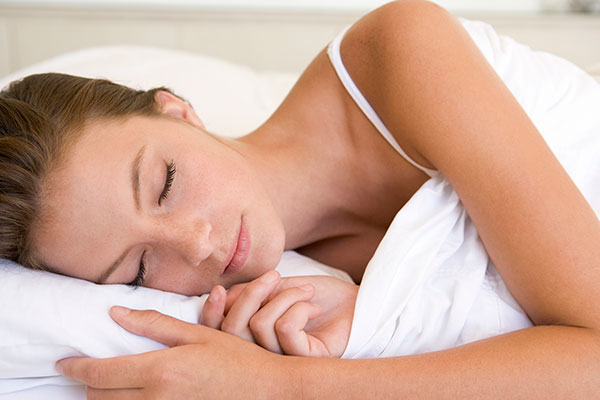5 common sleep disorders and how they affect you
 Amanda Tomlinson | March 15, 2017 | TheNational.ae
Amanda Tomlinson | March 15, 2017 | TheNational.ae
To achieve good overall health, there are many pieces of the health puzzle that need to fit into place – adequate nutrition, regular physical activity, mental wellbeing, etc. But a key ingredient that many people overlook is sleep.
It’s clear when we haven’t had enough sleep because we’re tired, grumpy and lack energy and, over time, our health begins to suffer. Sometimes there are obvious reasons why we aren’t getting enough sleep, such as work stress or having a new baby, but sometimes there are underlying causes, such as sleep apnea, which may need medical intervention.
Friday, March 17, is World Sleep Day and to mark the occasion, Dr Irshaad Ebrahim, consultant neuropsychiatrist and medical director at the London Sleep Centre Dubai, lists the five most common sleep disorders in the UAE and what can be done to overcome them.
Snoring: Snoring is caused when the flow of air through the mouth and nose is physically obstructed. Habitual snorers are at a risk of serious health issues including obstructive sleep apnea, heart diseases and even hypertension. If snoring is accompanied by other symptoms such as daytime sleepiness, morning headaches, unrefreshing sleep or getting up frequently at night to pass urine, then it indicates that the snoring is affecting sleep quality, and can be a sign of the more serious but relatively common condition of obstructive sleep apnea. To diagnose this a home sleep study is required. Treatment for snoring and mild sleep apnea may include a mandibular advancement splint, which is worn in the mouth at night to prevent the lower jaw from falling back, or sometimes simple position therapy which prevents the person from sleeping on their back. The standard treatment for sleep apnea is continuous positive air pressure therapy (CPAP) which involves the person wearing a mask over their mouth or nose connected via a tube to a small machine which pumps air into the airway to keep in open. Sufferers (and their sleep partners) often feel an immediate benefit once starting this treatment.
Initiation insomnia: Characterized by the inability to initiate sleep, this may seem a mild disorder initially but can go on to become an unbearable one and sufferers may experience acute anxiety, dizziness and hypertension as a result. It is important to treat the disorder in the early stages. Non-medical treatments may entail sleep hygiene, relaxation therapy, control of stimuli and sleep restriction while medical treatments could include a short-term prescription of sedatives, as well as cognitive behavioral therapy which helps re-train the brain to fall asleep
Maintenance insomnia: This is defined as waking up in the middle of your sleep and then having problems falling asleep again. Whether you are waking up briefly or frequently through the night, this sleep disorder can be irritating as it does not let you complete your mandatory sleep cycles. Factors such as stress, depression, medical issues, menopause and alcohol addiction can add further woes to this disorder. Between 70 and 80 per cent of patients with sleep maintenance insomnia have an underlying physiological sleep disorder that they are unaware of. This could be a mild sleep breathing disorder, or periodic limb twitches. To successfully treat this complaint it is important to know the exact cause – this is done by having a sleep study. Once the cause is determined and treated, the maintenance insomnia is usually cured. If no underlying disorders are found, then a combination of cognitive behavioral techniques, sleep restriction therapy or a short-term of prescribed sedatives can help.
Behaviorally induced insufficient sleep syndrome: BIISS is a chronic, voluntary sleep restriction that is a prevalent cause of excessive daytime sleepiness and daytime fatigue. It occurs when individuals sacrifice sleep in favour of other activities like watching TV, partying, late-night work shifts or hobbies such as reading. It can lead to poor work performance, social withdrawal, depression and other psychological problems if not dealt with. Remedies are individual-specific depending on the intensity of the disorder. In many cases sleep hygiene and habits are improved to induce routine sleep and in some cases sleep practitioners advise a cut in late-night work hours to maintain sleep sanctity.
Restless leg syndrome: This is the urge to move your legs. It is usually worse during the evenings and accompanied typically by uncomfortable sensations like itching, gnawing or creepy-crawling. This can cause sleep initiation insomnia in some suffers. It is also highly associated with another disorder called periodic limb movement disorder of sleep. A bed partner may notice frequent leg movements throughout the night and although they may be very small and unnoticeable, it can be highly detrimental to sleep quality. Restless leg syndrome can be treated with home remedies, lifestyle changes, or specialized medicine. Keeping to a regular sleep schedule, exercising, stretching, massage, avoiding alcohol and applying heat or cold to your legs can help ease discomfort. Vitamins, supplements (especially iron if iron levels are low) and prescription medications can also help with RLS symptoms and periodic limb movement disorder.




